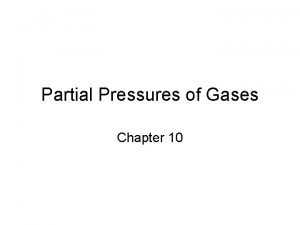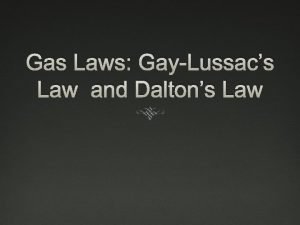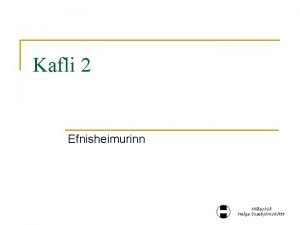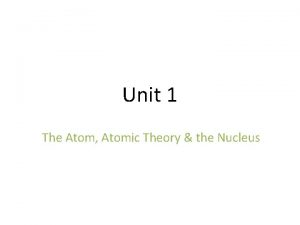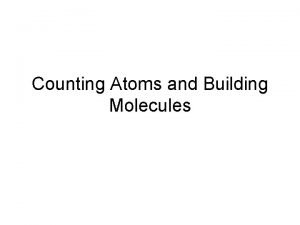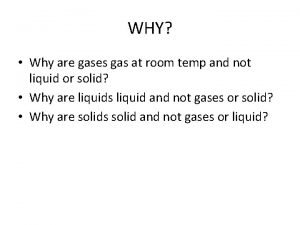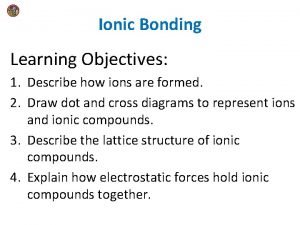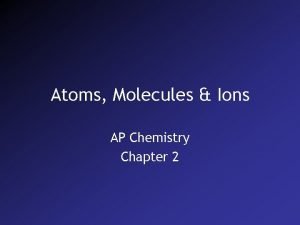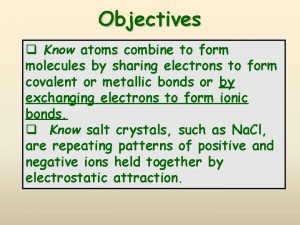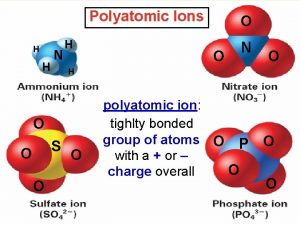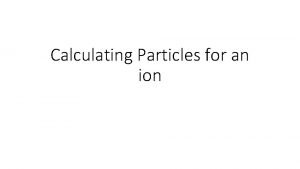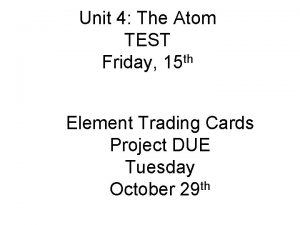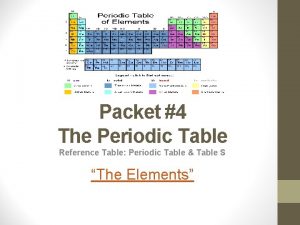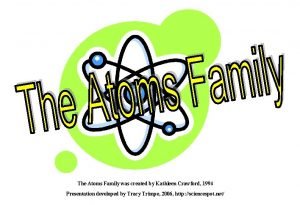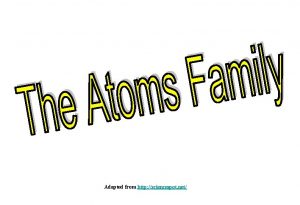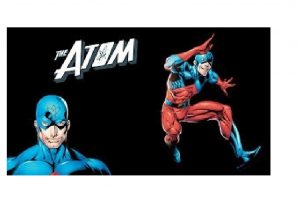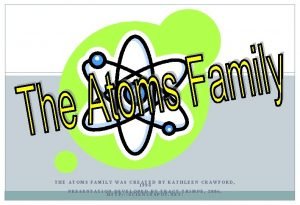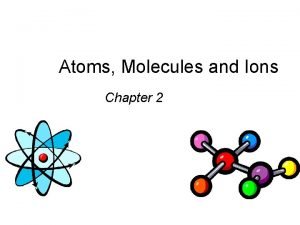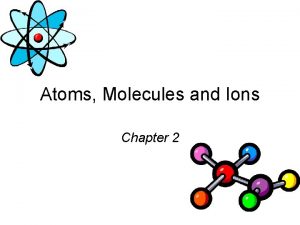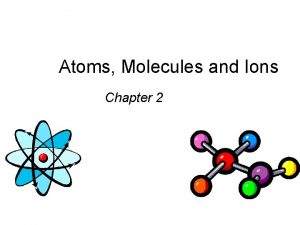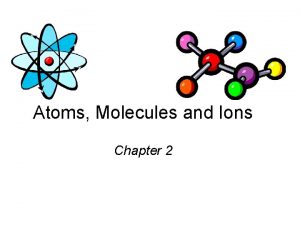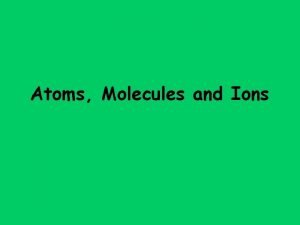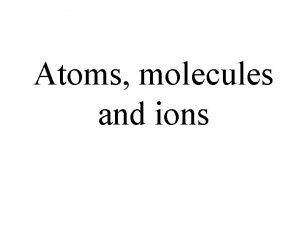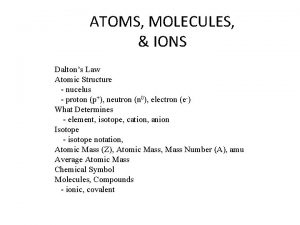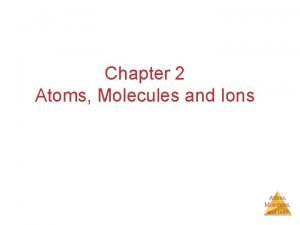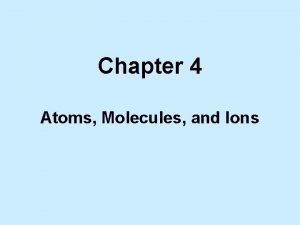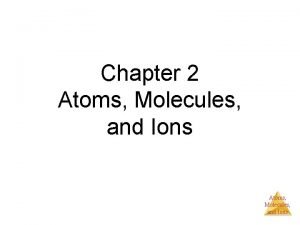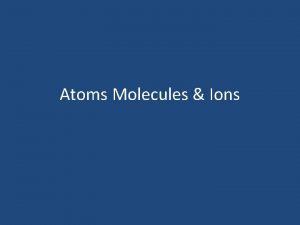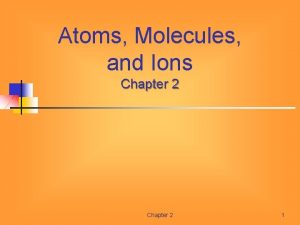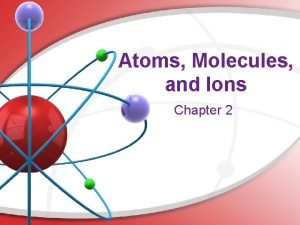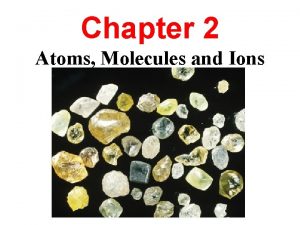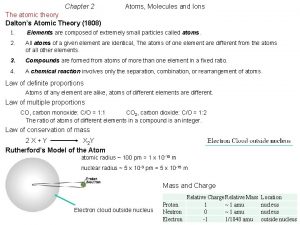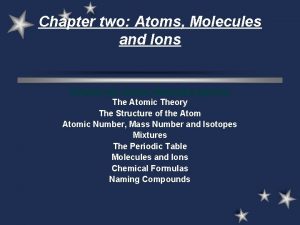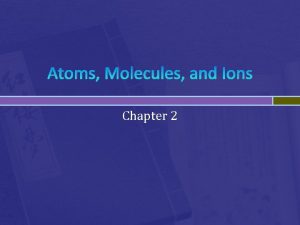Atoms Molecules and Ions Chapter 2 Daltons Atomic






























- Slides: 30

Atoms, Molecules, and Ions Chapter 2

Dalton’s Atomic Model l First model - early 1800’s l l l Developed through experiments All elements are composed of tiny indivisible particles called atoms All atoms of the same element are identical.

Discovery of Electron l 1897 – JJ Thomson, using cathode ray tube, discovered the charge to mass ratio of negatively charged particles, later called electrons, to be 1. 76 x 108 C/g

Millikan’s Oil Drop Experiment l l 1909 – Robert Millikan discovered the charge of an electron, 1. 6 x 10 -19 C Mass of electron = 9. 1 x 10 -28 g

“Plum Pudding” Model l Uniform positive sphere with negatively charged electrons embedded within.

Radiation l Late 1800’s – discovery of radiation l Three Types l l l Alpha Beta Gamma

Rutherford Gold Foil Experiment - 1909 l l l Shot alpha particles at gold foil Most went through foil with little or no deflection. Some were deflected at large angle and some straight back.

Rutherford Gold Foil Experiment - 1909

Rutherford Model l Conclusions from Gold Foil Experiment l l l Atom is Mostly Empty Space Dense positive nucleus Electrons moving randomly around nucleus

Bohr Model l Dense positive nucleus l Electrons in specified circular paths, called energy levels

Wave Mechanical Model l More detailed view of the Bohr Model l Energy levels are divided into sublevels l Electrons are found in Orbitals (in the sublevels) l l region of space with a high probability where electron COULD be. Modern Model l AKA Quantum Mechanical Model, Electron Cloud Model

Subatomic Particles l Electron l l l Discovered in 1897 by JJ Thomson Negative charge (-1) Mass = 9. 109389*10 -28 g Approx mass ~ 0 Found outside of nucleus

Subatomic Particles l Proton l l l Discovered in 1919 by Rutherford Positive charge (+1) Mass = 1. 672623*10 -24 g Approx mass ~ 1 atomic mass unit (u) Found inside nucleus

Subatomic Particles l Neutron l l l Discovered in 1932 by James Chadwick No charge (0) Mass = 1. 6749286*10 -24 g Approx mass ~ 1 atomic mass unit (u) Just slightly larger than a proton Found inside nucleus

Atomic Structure l Atomic Number - number of protons in an element l All atoms of the same element have the same number of protons l Mass Number - number of protons and neutrons in an atom l Isotope – atoms of the same element with different number of neutrons

Chemical Symbols Mass Number Atomic Number l l Cl-35 Chlorine-35

Ion l Atom or group of atoms that have gained or lost one or more electrons l l Have a charge Example: l H+, Ca 2+, Cl-, OH-

Average Atomic Mass l l Weighted average based on the relative abundance and mass number for all naturally occurring isotopes Example l l C-12 C-13 12. 00 u 13. 00 u 98. 9% 1. 1% 12. 011 u

Periodic Table

Molecular Formula l Chemical Formula used to represent a molecule l l Usually contain nonmetals Give exact number of atoms of each element in a compound l H 2 O

Empirical Formula l Gives the lowest whole-number ratio of atoms of each element in a compound l C 6 H 12 O 6 CH 2 O

Structural Formula l Shows order in which atoms are bonded O H H O=C=O

Ionic Compounds l Usually contains a metal and a nonmetal or polyatomic ions l Ionic formula is an empirical formula l Na. Cl

Naming Ions and Ionic Compounds l Name positive ion first, then negative ion. l l Na. Cl, Sodium Chloride Ions of metals that have more than one positive oxidation number need a roman numeral

Oxyanions l l Polyatomic ions often contain oxygen The most common combination of oxygen and another ion will end with –ate l l Nitrate (NO 3 -), Sulfate (SO 42 -), Chlorate (Cl. O 3 -) The anion with one less oxygen will end with –ite l Nitrite (NO 2 -), Sulfite (SO 32 -), Chlorite (Cl. O 2 -)

Oxyanions l An anion with two less oxygens will start with Hypo- and end with –ite l l Hypochlorite (Cl. O-) An anion with one more oxygen that the most common ion will start with Per- and end with –ate l Perchlorate (Cl. O 4 -)

Naming Acids l Acid names are based on the anion in the acid l Anions that end with –ide become hydro_____ic acid l HCl Chloride Hydrochloric acid l

Naming Acids l Anions that end with –ate become _____ic acid l HNO 3 Nitrate Nitric acid l l l H 2 SO 4 Sulfate Sulfuric acid

Naming Acids l Anions that end with –ite become _____ous acid l HNO 2 Nitrite Nitrous acid l l l H 2 SO 3 Sulfite Sulfurous acid

Naming Molecular Compounds l Use a prefix to indicate the number of atoms for each element l l l Binary Covalent System Second element ends in –ide Exceptions l l When there is only one atom of the first element, do not use mono- prefix. When an element starts with a vowel, drop any o or a at the end of a prefix
 Chapter 2 atoms molecules and ions
Chapter 2 atoms molecules and ions Ion chapter 11
Ion chapter 11 Atoms molecules and ions
Atoms molecules and ions Atoms molecules and ions
Atoms molecules and ions Atoms molecules and ions
Atoms molecules and ions Atoms ions and molecules
Atoms ions and molecules Atoms ions and molecules
Atoms ions and molecules Collision theory states that
Collision theory states that Positive ions and negative ions table
Positive ions and negative ions table Two flasks are connected with a stopcock
Two flasks are connected with a stopcock Dalton's gas law
Dalton's gas law Site:slidetodoc.com
Site:slidetodoc.com Dalton atomic theory summary
Dalton atomic theory summary Daltons experiment
Daltons experiment Relationship between atoms and molecules
Relationship between atoms and molecules Study jams mixtures
Study jams mixtures 3bacl2 counting atoms
3bacl2 counting atoms Interacting molecules or ions
Interacting molecules or ions Organic molecules vs inorganic molecules
Organic molecules vs inorganic molecules More protons than electrons
More protons than electrons Atoms or ions are considered isoelectronic if
Atoms or ions are considered isoelectronic if Why do atoms combine to form molecules
Why do atoms combine to form molecules Regents periodic table
Regents periodic table Poly atomic ions chart
Poly atomic ions chart Isotope notation
Isotope notation Matterville answer key
Matterville answer key Periodic reference table
Periodic reference table Atom family song
Atom family song The atoms family atomic math challenge
The atoms family atomic math challenge The atom family atomic math challenge
The atom family atomic math challenge The atoms family atomic math challenge
The atoms family atomic math challenge









